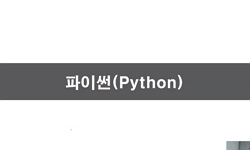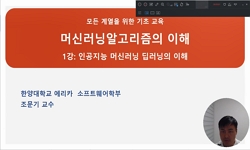미세먼지 (PM<sub>10</sub>) 및 초미세먼지 (PM<sub>2.5</sub>)는 인체에 흡수 가능하여 호흡기 질환 및 심장 질환과 같이 인체 건강에 악영향을 미치며, 심각할 경우 조기 사망에 영...
http://chineseinput.net/에서 pinyin(병음)방식으로 중국어를 변환할 수 있습니다.
변환된 중국어를 복사하여 사용하시면 됩니다.
- 中文 을 입력하시려면 zhongwen을 입력하시고 space를누르시면됩니다.
- 北京 을 입력하시려면 beijing을 입력하시고 space를 누르시면 됩니다.


부스팅 기반 기계학습기법을 이용한 지상 미세먼지 농도 산출 = Estimation of Ground-level PM10 and PM2.5 Concentrations Using Boosting-based Machine Learning from Satellite and Numerical Weather Prediction Data
한글로보기https://www.riss.kr/link?id=A107392684
- 저자
- 발행기관
- 학술지명
- 권호사항
-
발행연도
2021
-
작성언어
-
- 주제어
-
등재정보
KCI등재,SCOPUS,ESCI
-
자료형태
학술저널
- 발행기관 URL
-
수록면
321-335(15쪽)
-
KCI 피인용횟수
1
- DOI식별코드
- 제공처
- 소장기관
-
0
상세조회 -
0
다운로드
부가정보
국문 초록 (Abstract)
미세먼지 (PM<sub>10</sub>) 및 초미세먼지 (PM<sub>2.5</sub>)는 인체에 흡수 가능하여 호흡기 질환 및 심장 질환과 같이 인체 건강에 악영향을 미치며, 심각할 경우 조기 사망에 영향을 줄 수 있다. 전 세계적으로 현장관측기반의 모니터링을 수행하고 있지만 미 관측지역에 대한 대기질 분포의 공간적인 한계점이 존재하여 보다 광범위한 지역에 대한 지속적이고 정확한 모니터링이 필요한 상황이다. 위성기반 에어로졸 정보를 사용함으로써 이러한 현장 관측자료의 한계점을 극복할 수 있다. 따라서 본 연구에서는 다양한 위성 및 모델자료를 활용하여 2019년도에 대해 한 시간 단위의 지상 PM<sub>10</sub> 및 PM<sub>2.5</sub> 농도를 추정하였다. GOCI 위성의 관측영역을 포함하는 동아시아 지역에 대해 트리 기반 앙상블 방법을 사용하는 Boosting 기법인 GBRTs (Gradient Boosted Regression Trees)와 LightGBM (Light Gradient Boosting Machine)을 활용하여 모델을 구축하였다. 또한, 기상변수 및 토지피복변수의 사용유무에 따른 모델의 성능을 비교하기 위해 두 가지 festure set으로 나누어 테스트하였다. 두 기법 모두 주요 변수인 AOD (Aerosol Optical Depth), SSA (Single Scattering Albedo), DEM (Digital Eelevation Model), DOY(Day of Year), HOD (Hour of Day)와 기상변수 및 토지피복변수를 함께 사용한 Feature set 1을 사용하였을 때 높은 정확도를 보였다. Feature set 1에 대해 GBRT 모델이 LightGBM에 비해서약 10%의 정확도 향상을 보였다. 가장 정확도가 높았던 기상 및 지표면 변수를 포함한 Feature set1을 사용한 GBRT기반 모델을 최종모델로 선정하였으며 (PM<sub>10</sub>: R<sup>2</sup> = 0.82 nRMSE = 34.9%, PM<sub>2.5</sub>: R<sup>2</sup> = 0.75 nRMSE = 35.6%), 계절별 및 연평균 PM<sub>10</sub> 및 PM<sub>2.5</sub> 농도에 대한 공간적인 분포를 확인해본 결과, 현장관측자료와 비슷한 공간 분포를 보였으며, 국가별 농도 분포와 계절에 따른 시계열 농도 패턴을 잘 모의하였다.
다국어 초록 (Multilingual Abstract)
Particulate matter (PM<sub>10</sub> and PM<sub>2.5</sub> with a diameter less than 10 and 2.5 μm, respectively) can be absorbed by the human body and adversely affect human health. Although most of the PM monitoring are based ...
Particulate matter (PM<sub>10</sub> and PM<sub>2.5</sub> with a diameter less than 10 and 2.5 μm, respectively) can be absorbed by the human body and adversely affect human health. Although most of the PM monitoring are based on ground-based observations, they are limited to point-based measurement sites, which leads to uncertainty in PM estimation for regions without observation sites. It is possible to overcome their spatial limitation by using satellite data. In this study, we developed machine learningbased retrieval algorithm for ground-level PM<sub>10</sub> and PM<sub>2.5</sub> concentrations using aerosol parameters from Geostationary Ocean Color Imager (GOCI) satellite and various meteorological parameters from a numerical weather prediction model during January to December of 2019. Gradient Boosted Regression Trees (GBRT) and Light Gradient Boosting Machine (LightGBM) were used to estimate PM concentrations. The model performances were examined for two types of feature sets-all input parameters (Feature set 1) and a subset of input parameters without meteorological and land-cover parameters (Feature set 2). Both models showed higher accuracy (about 10 % higher in R<sup>2</sup>) by using the Feature set 1 than the Feature set 2. The GBRT model using Feature set 1 was chosen as the final model for further analysis (PM<sub>10</sub>: R<sup>2</sup> = 0.82, nRMSE = 34.9 %, PM<sub>2.5</sub>: R<sup>2</sup> = 0.75, nRMSE = 35.6 %). The spatial distribution of the seasonal and annual-averaged PM concentrations was similar with in-situ observations, except for the northeastern part of China with bright surface reflectance. Their spatial distribution and seasonal changes were well matched with in-situ measurements.
참고문헌 (Reference)
1 임현광, "일본 정지궤도 기상위성 Himawari-8을 이용한 에어로졸 광학정보 산출 및 검증" 대한원격탐사학회 32 (32): 681-691, 2016
2 Du, C., "Urban boundary layer height characteristics and relationship with particulate matter mass concentrations in Xi’an, central China" 13 (13): 1598-1607, 2013
3 Wang, S., "The impacts of different kinds of dust events on PM10 pollution in northern China" 40 (40): 7975-7982, 2006
4 Friedman, J. H., "Stochastic gradient boosting" 38 (38): 367-378, 2002
5 Zhan, Y., "Spatiotemporal prediction of continuous daily PM2. 5 concentrations across China using a spatially explicit machine learning algorithm" 155 : 129-139, 2017
6 Pedregosa, F., "Scikit-learn : Machine learning in Python" 12 : 2825-2830, 2011
7 Zhang, T., "Satellite-based ground PM2.5 estimation using a gradient boosting decision tree" 268 : 128801-, 2021
8 She, Q., "Satellite-based estimation of hourly PM2.5 levels during heavy winter pollution episodes in the Yangtze River Delta, China" 239 : 124678-, 2020
9 Rodrıguez, S., "Saharan dust contributions to PM10 and TSP levels in Southern and Eastern Spain" 35 (35): 2433-2447, 2001
10 Qadeer, K., "Prediction of PM10Concentration in South Korea Using Gradient Tree Boosting Models" 1-6, 2019
1 임현광, "일본 정지궤도 기상위성 Himawari-8을 이용한 에어로졸 광학정보 산출 및 검증" 대한원격탐사학회 32 (32): 681-691, 2016
2 Du, C., "Urban boundary layer height characteristics and relationship with particulate matter mass concentrations in Xi’an, central China" 13 (13): 1598-1607, 2013
3 Wang, S., "The impacts of different kinds of dust events on PM10 pollution in northern China" 40 (40): 7975-7982, 2006
4 Friedman, J. H., "Stochastic gradient boosting" 38 (38): 367-378, 2002
5 Zhan, Y., "Spatiotemporal prediction of continuous daily PM2. 5 concentrations across China using a spatially explicit machine learning algorithm" 155 : 129-139, 2017
6 Pedregosa, F., "Scikit-learn : Machine learning in Python" 12 : 2825-2830, 2011
7 Zhang, T., "Satellite-based ground PM2.5 estimation using a gradient boosting decision tree" 268 : 128801-, 2021
8 She, Q., "Satellite-based estimation of hourly PM2.5 levels during heavy winter pollution episodes in the Yangtze River Delta, China" 239 : 124678-, 2020
9 Rodrıguez, S., "Saharan dust contributions to PM10 and TSP levels in Southern and Eastern Spain" 35 (35): 2433-2447, 2001
10 Qadeer, K., "Prediction of PM10Concentration in South Korea Using Gradient Tree Boosting Models" 1-6, 2019
11 Soni, M., "Particulate matter estimation over a semi arid region Jaipur, India using satellite AOD and meteorological parameters" 9 (9): 949-958, 2018
12 Gupta, P., "Particulate matter air quality assessment using integrated surface, satellite, and meteorological products : Multiple regression approach" 114 (114): 1-13, 2009
13 Gupta, P., "Particulate matter air quality assessment using integrated surface, satellite, and meteorological products : 2. A neural network approach" 114 (114): 1-14, 2009
14 Stirnberg, R., "Meteorology-driven variability of air pollution(PM1)revealed with explainable machine learning" 21 (21): 3919-3948, 2021
15 Lv, Z., "Meteorological characteristics within boundary layer and its influence on PM2.5 pollution in six cities of North China based on WRF-Chem" 228 : 117417-, 2020
16 Ke, G., "Lightgbm: A highly efficient gradient boosting decision tree" 30 : 3146-3154, 2017
17 Jin, K., "LEO and GEO satellite programs for space-borne measurement of aerosol" 16 (16): 53-62, 2018
18 Krasnov, H., "Increase in dust storm related PM10 concentrations : A time series analysis of 2001-2015" 213 : 36-42, 2016
19 Jethva, H., "Global assessment of OMI aerosol single-scattering albedo using ground-based AERONET inversion" 119 (119): 9020-9040,
20 Pope III, C. A., "Fine-particulate air pollution and life expectancy in the United States" 360 (360): 376-386, 2009
21 Chen, Z. -Y., "Extreme gradient boosting model to estimate PM2.5 concentrations with missing-filled satellite data in China" 202 : 180-189, 2019
22 Xu, Y., "Evaluation of machine learning techniques with multiple remote sensing datasets in estimating monthly concentrations of ground-level PM2.5" 242 : 1417-1426, 2018
23 Park, S., "Estimation of ground-level particulate matter concentrations through the synergistic use of satellite observations and process-based models over South Korea" 19 (19): 1097-1113, 2019
24 이상훈, "Estimation of ambient PM10 and PM2.5 concentrations in Seoul, South Korea, using empirical models based on MODIS and Landsat 8 OLI imagery" 농업과학연구소 47 (47): 59-66, 2020
25 Ghotbi, S., "Estimating urban ground-level PM10 using MODIS 3 km AOD product and meteorological parameters from WRF model" 141 : 333-346, 2016
26 Geng, G., "Estimating long-term PM2.5 concentrations in China using satellite-based aerosol optical depth and a chemical transport model" 166 : 262-270, 2015
27 Liu, Y., "Estimating ground-level PM2.5 in the eastern United States using satellite remote sensing" 39 (39): 3269-3278, 2005
28 Ma, Z., "Estimating ground-level PM2.5 in China using satellite remote sensing" 48 (48): 7436-7444, 2014
29 Kloog, I., "Estimating daily PM2.5 and PM10 across the complex geo-climate region of Israel using MAIAC satellite-based AOD data" 122 : 409-416, 2015
30 Guo, B., "Estimating PM2.5 concentrations via random forest method using satellite, auxiliary, and ground-level station dataset at multiple temporal scales across China in 2017" 778 : 146288-, 2021
31 Lee, H. J., "Enhancing the applicability of satellite remote sensing for PM2.5 estimation using MODIS deep blue AOD and land use regression in California, United States" 50 (50): 6546-6555, 2016
32 Gui, K., "Construction of a virtual PM2.5 observation network in China based on high-density surface meteorological observations using the Extreme Gradient Boosting model" 141 : 105801-, 2020
33 Jerrett, M., "Comparing the health effects of ambient particulate matter estimated using ground-based versus remote sensing exposure estimates" 125 (125): 552-559, 2017
34 Sorek-Hamer, M., "Assessment of PM2.5 concentrations over bright surfaces using MODIS satellite observations" 163 : 180-185, 2015
35 Kukkonen, J., "Analysis and evaluation of selected local-scale PM10 air pollution episodes in four European cities : Helsinki, London, Milan and Oslo" 39 (39): 2759-2773, 2005
동일학술지(권/호) 다른 논문
-
농림위성 활용 수종분류 가능성 평가를 위한 래피드아이 영상 기반 시험 분석
- 대한원격탐사학회
- 권수경 ( Soo-kyung Kwon )
- 2021
- KCI등재,SCOPUS,ESCI
-
SAR 검보정 Site 구축을 위한 후방 산란 특성 분석
- 대한원격탐사학회
- 이태승 ( Taeseung Lee )
- 2021
- KCI등재,SCOPUS,ESCI
-
우리나라 시군단위 벼 수확량 예측을 위한 다종 기상자료의 비교평가
- 대한원격탐사학회
- 조수빈 ( Subin Cho )
- 2021
- KCI등재,SCOPUS,ESCI
-
천리안위성2A호 기상탑재체 Best Detector Select 맵 평가 및 업데이트
- 대한원격탐사학회
- 진경욱 ( Kyoungwook Jin )
- 2021
- KCI등재,SCOPUS,ESCI
분석정보
인용정보 인용지수 설명보기
학술지 이력
| 연월일 | 이력구분 | 이력상세 | 등재구분 |
|---|---|---|---|
| 2027 | 평가예정 | 재인증평가 신청대상 (재인증) | |
| 2021-01-01 | 평가 | 등재학술지 유지 (재인증) |  |
| 2018-01-01 | 평가 | 등재학술지 유지 (등재유지) |  |
| 2015-01-01 | 평가 | 등재학술지 유지 (등재유지) |  |
| 2011-01-01 | 평가 | 등재학술지 유지 (등재유지) |  |
| 2009-01-01 | 평가 | 등재학술지 유지 (등재유지) |  |
| 2007-01-01 | 평가 | 등재학술지 유지 (등재유지) |  |
| 2006-07-24 | 학술지등록 | 한글명 : 대한원격탐사학회지외국어명 : Korean Journal of Remote Sensing |  |
| 2005-01-01 | 평가 | 등재학술지 유지 (등재유지) |  |
| 2002-07-01 | 평가 | 등재학술지 선정 (등재후보2차) |  |
| 2000-01-01 | 평가 | 등재후보학술지 선정 (신규평가) |  |
학술지 인용정보
| 기준연도 | WOS-KCI 통합IF(2년) | KCIF(2년) | KCIF(3년) |
|---|---|---|---|
| 2016 | 0.52 | 0.52 | 0.54 |
| KCIF(4년) | KCIF(5년) | 중심성지수(3년) | 즉시성지수 |
| 0.53 | 0.44 | 0.725 | 0.12 |





 ScienceON
ScienceON KISS
KISS







